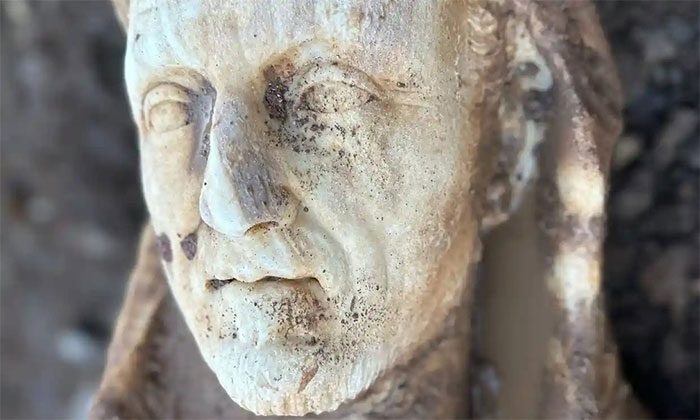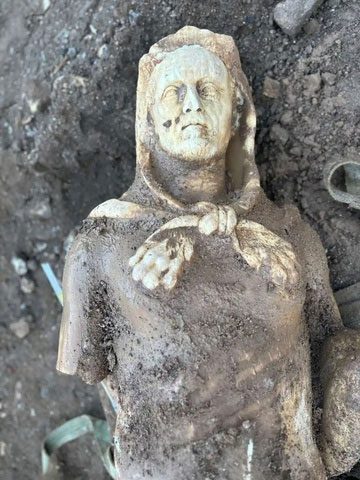A statue depicting Hercules from Roman mythology has been discovered during repairs to a pipeline on a famous street in Rome, Italy.

The head of the Hercules statue excavated in Rome, Italy. (Photo: Parco Archeologico dell’Appia Antica).
The marble statue, life-sized, was discovered while repairing damaged water pipes that had caused erosion on the Appian Way, a famous ancient road, as reported by The Guardian on January 27.
The statue dates back to the Roman Empire (from 27 BC to 476 AD). Based on its depiction of a figure wielding a club and wearing a lion skin headdress, archaeologists identified the statue as representing Hercules, a demigod from ancient Rome.

The Hercules statue excavated in Rome, Italy. (Photo: Parco Archeologico dell’Appia Antica).
Although the statue was partially damaged during excavation, it is in good condition overall.
This marks the second recent appearance of the Appian Way in the news. On January 11, the Italian Ministry of Culture officially supported the nomination of the Appian Way to the UNESCO World Heritage List.
This road played a significant role in trade and military activities during Roman history. The Roman poet Statius referred to the Appian Way as “the queen of long roads.”
This is the first time that the Ministry has directly supported a nomination for UNESCO heritage. If approved, the Appian Way—stretching 550 kilometers from Rome to the city of Brindisi in southern Italy—would become the second longest World Heritage Site, following the Great Wall of China.
Previously, in November 2022, dozens of bronze statues dating back 2,300 years, older than the Hercules statue, were discovered in baths in Tuscany, Italy.




















































